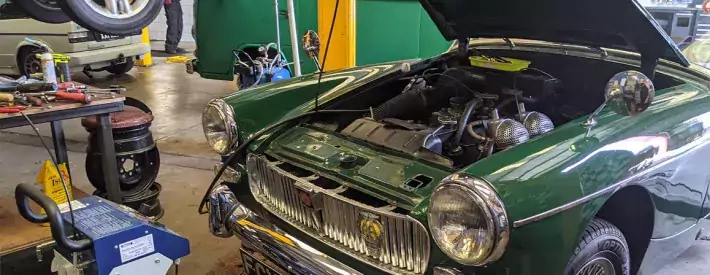Boiling point for brake fluid

Brake fluid plays a critical function within a hydraulic system, but can often become overlooked and has become a more complex operation.
Due to the hygroscopic (it absorbs moisture from the air) nature of commonly used glycol-based brake fluid, accurately measuring water content is a critical part of routine maintenance. And since 2018, contamination of the fluid has been part of the MOT inspection, so it’s worth knowing your DOT 3 from your DOT 5 fluids.
Why water is a problem
Manufacturer’s data generally gives a 24-month lifespan for common use brake fluid, factors such as the age of the vehicle, changes in ownership, interruptions like a pandemic – can all contribute to the potential of missing this important routine change.
High-water content accelerates corrosion in the system, the expansion caused by ice can compromise integrity, and when the brakes transfer heat to the fluid the water can vaporize in the system creating gaseous pockets, rendering the hydraulic system inoperable.
Take a visual check
Used during the MOT, brake fluid is checked for level and contamination. However, removal of the cap is not permitted and aged vehicles may make this method of inspection difficult. Brake fluid that has turned to the colour of cola is an easy contamination to spot, but it does mean only the very worst presentations are issued with a reason for refusal.
A visual inspection during routine maintenance doesn’t have this restriction, but if you are going to take the cap off testing the fluid is advisable as normal, straw coloured brake fluid, may still have a high-water content.
Get the measurements right
There are two common methods to measure the water content in brake fluid. One is using a dip style pen device that utilises a traffic light LED display to indicate the approximate water content. This is an economic solution and doesn’t remove any fluid from the reservoir.
The second method takes a sample of the brake fluid and boils it, allowing that boiling point to be very accurately recorded. The equipment used for this can be multiple times more expensive and requires replacement fluid if the sample proves it’s still useable. The price point of the equipment makes this a more unusual choice, but the high degree of accuracy could make the investment worthwhile.
Fluid exchange
Whenever the brake hydraulic system is opened, it introduces air into the system. Historically, changing the brake fluid was a manual process, using an assistant to press the brake pedal while each line was bled. This can still be a common practice in older vehicles but most modern vehicles require a diagnostic tool used with a pressure brake bleeder to change the fluid.
This has the advantage of becoming a one-person operation and it’s essential for modern systems as the use of pressure and the diagnostic tool removes not only the air from the system, but any remaining debris. Left unchecked this can cause component failure in items such as the ABS module.
Although this can be a faster operation, it can often be more expensive owing to the greater tooling investment, the maintenance of that equipment and the need to continuously upgrade the database for new vehicles.
Referencing manufacturer’s information is essential, both for the selection of the correct brake fluid (different types should not be mixed) and also for the prescribed technique for change.
And although it’s possible to use a one-person operation using a pressure bleeder for older brake systems, it isn’t recommended for a manual operation for a brake system that requires diagnostic equipment and/or a pressure bleeder.
And in the age of electrification, it’s worth remembering that some high-voltage vehicles may use regenerative braking meaning there could well be two hydraulic systems to bleed.
Common brake fluids and their wet boiling points
- DOT 3 glycol based 140°C
- DOT 4 glycol based (most common) 155°C
- Super DOT 4 glycol based 195°C
- DOT 5.1 glycol based 185°C
- DOT 5 silicon based 185°C
Symptoms of air in the brake system
- Spongey brake pedal
- Imbalance
- Methods of inspection




